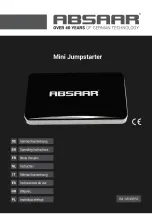
Asentria SiteBoss 530 User Manual
91
Configuring Data Alarm Equations
The equation is the heart of any data event. The following are a few examples event equations:
•
alarm_code = "L31"
•
ext >= "A 600" AND exit_code = "DN"
•
(alarm_code > "1051" OR exit_code = "1Ow74x") AND switch = " 001.1.9*.**"
•
@ = "CRITICAL"
Here are a few tips to help you create your own data event equations:
•
Multiple field references are acceptable, as long as both fields are the same length. For example,
d=c
is a valid
equation if the fields that both 'd' and 'c' represent are two characters long
•
Variable names are case sensitive
•
Equation literals (the data contained within quotation marks) are case sensitive
•
If any rule is violated in a equation, an alarm will not be generated, nor will an error be presented
Note:
There may be times when two or more fields are necessary to analyze one piece of data. For
example, if a time is represented in hh:mm format, some calculations may require two different fields. Other
times, wildcards will do the job of masking out non-important characters just fine.
The data alarm equations used in the S530 are standard Boolean-type operators. The following table outlines
each of the supported operators and their function.
Operator Function
> Greater
Than
< Less
Than
>=
Greater Than or Equal to
<=
Less Than or Equal to
! or <>
Not Equal to
= Equal
to
*
Single character wildcard (matches any character or space)
()
Parenthesis used to combine operations
OR Logical
OR
AND Logical
AND
@
Positional wildcard (used in place of a field name to match anywhere within an
incoming record)
Summary of Contents for SiteBoss 530
Page 6: ......
















































